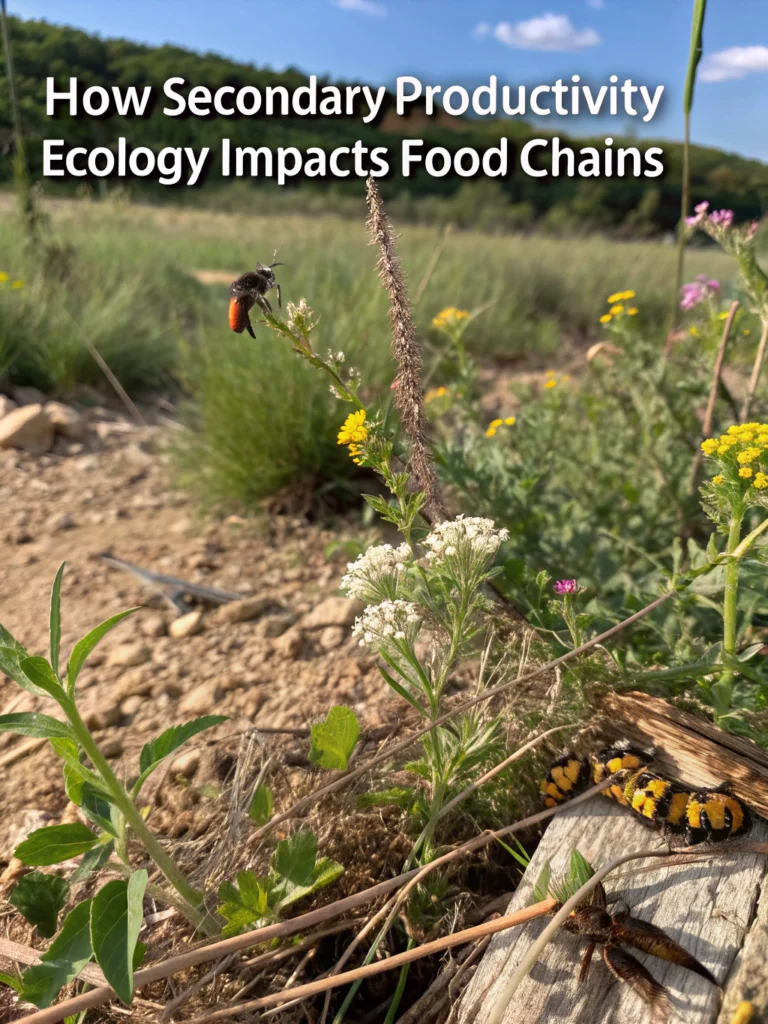How Secondary Productivity Ecology Impacts Food Chains
Secondary productivity ecology plays a crucial role in shaping the dynamics of ecosystems and food chains. Understanding this concept can give us insights into energy flow in ecosystems, trophic levels productivity, and the overall ecological efficiency of environments.
What is Secondary Productivity Ecology?
Secondary productivity ecology refers to the generation of organic matter by heterotrophic organisms, specifically animals that consume primary producers (like plants). This process is essential for maintaining the structure and stability of food webs. It essentially connects the energy captured by producers to higher trophic levels, signifying its impact on food chains.
Energy Flow in Ecosystems
In ecosystems, energy flows in a hierarchical fashion. Primary producers convert sunlight into energy through photosynthesis. When these producers are consumed by herbivores, the energy is transferred to the next trophic level. In this context, secondary production in animals reflects how effectively energy is converted into living biomass at higher levels. Understanding energy flow helps clarify how ecosystems function, and how energy efficiency varies among different species and environments.
Trophic Levels and Productivity
Trophic levels represent the positions that different species occupy in a food chain or food web. Each level experiences a loss of energy as it moves up the chain, typically about 90% with only around 10% of the energy being converted into biomass. This illustrates trophic levels productivity, as productivity decreases with increasing trophic level due to inefficiencies in energy transfer.
In contrast, higher secondary productivity indicates a thriving ecosystem where energy is effectively converted into biomass. Thus, secondary productivity ecology can influence the number of consumers that a given area can support, providing insights into the health and sustainability of an ecosystem.
Ecological Efficiency
Ecological efficiency refers to the efficiency with which energy is transferred from one trophic level to the next. Factors influencing this efficiency include:
- The type of organisms in the food web
- The nature of the food available
- Environmental conditions
Understanding ecological efficiency helps evaluate the stability and resilience of ecosystems. An ecosystem that effectively recycles energy can sustain a more complex food web, fostering greater biodiversity.
Food Web Dynamics
Food webs are complex networks that illustrate the feeding relationships between organisms in an ecosystem. The dynamics of these webs can shift dramatically based on changes in secondary productivity ecology. For instance, alterations in the population of primary producers can affect herbivore numbers, subsequently impacting carnivores. Importantly, food web dynamics highlight the interdependence among species, reinforcing the significance of maintaining balanced productivity levels across ecosystems.
Conclusion
Secondary productivity ecology is a vital aspect of understanding how ecosystems function and maintain balance. Its influence on food chains, energy flow in ecosystems, and trophic levels productivity is fundamental for studying ecological efficiency and food web dynamics.
To dive deeper into productivity and ecological insights, check out our resource bundles:
Our eBooks at eBookBusinessClub provide valuable insights into driving productivity, whether you're exploring business strategies or enhancing your marketing efforts.
FAQs
Q: What is secondary productivity in ecology?
A: Secondary productivity refers to the generation of biomass by heterotrophic organisms through the consumption of primary producers.
Q: How does secondary productivity impact food chains?
A: It determines the amount of energy available for the higher trophic levels, affecting the entire structure of the food chain.
Q: What is the significance of ecological efficiency?
A: It measures how well energy is transferred between trophic levels, influencing ecosystem health and stability.
Q: How can I improve my understanding of productivity ecology?
A: Resources like the AI for Productivity eBook + Checklist and ADHD Productivity Power Pack can offer valuable insights.

Understanding secondary productivity ecology helps us appreciate the intricate balance within ecosystems. This knowledge is vital for conservation efforts and enhancing ecological resilience.

